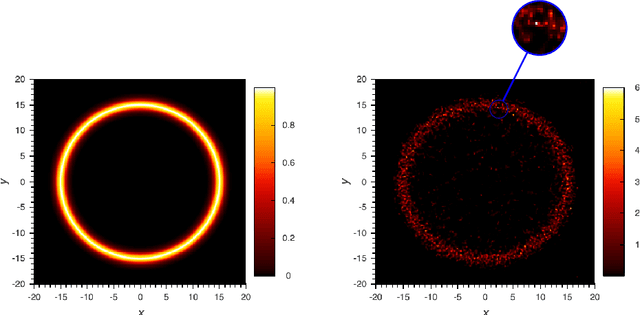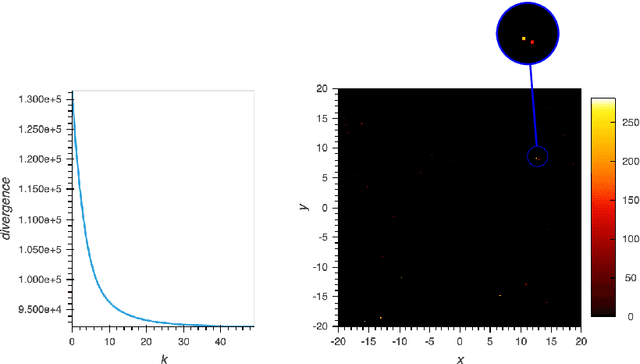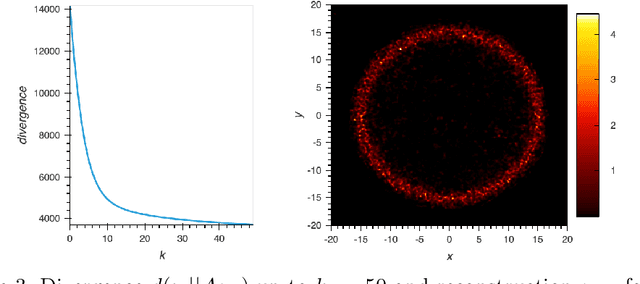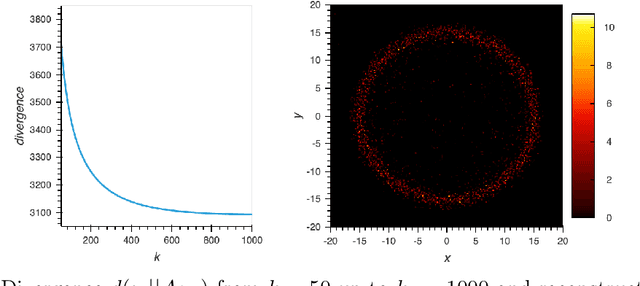The ML-EM algorithm in continuum: sparse measure solutions
Paper and Code
Sep 04, 2019



Linear inverse problems $A \mu = \delta$ with Poisson noise and non-negative unknown $\mu \geq 0$ are ubiquitous in applications, for instance in Positron Emission Tomography (PET) in medical imaging. The associated maximum likelihood problem is routinely solved using an expectation-maximisation algorithm (ML-EM). This typically results in images which look spiky, even with early stopping. We give an explanation for this phenomenon. We first regard the image $\mu$ as a measure. We prove that if the measurements $\delta$ are not in the cone $\{A \mu, \mu \geq 0\}$, which is typical of short exposure times, likelihood maximisers as well as ML-EM cluster points must be sparse, i.e., typically a sum of point masses. On the other hand, in the long exposure regime, we prove that cluster points of ML-EM will be measures without singular part. Finally, we provide concentration bounds for the probability to be in the sparse case.
 Add to Chrome
Add to Chrome Add to Firefox
Add to Firefox Add to Edge
Add to Edge